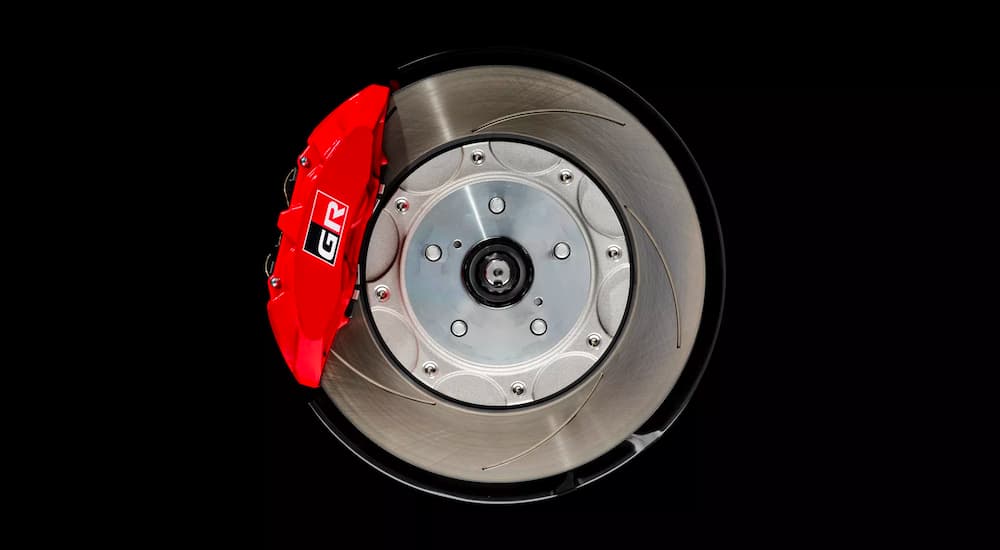This weekend saw the 89th running of the world’s oldest and greatest endurance race, the 24 Hours of Le Mans. Held on the Circuit de la Sarthe, a combination of race track and public roads through the French countryside, Le Mans is a grueling challenge for cars and drivers. After an early morning start on Saturday, the cars race continuously for 24 hours, with each time rotating between three drivers. In the early days of automotive racing, few cars were up to the challenge, and even today, many cars fail to complete the full race. This weekend, no fewer than 17 of the 61 cars were forced to end their race early for reasons ranging from crashes to mechanical failures.
The 2021 race saw some changes to the rules, with a new Hypercar class replacing the LMP1 (Le Mans Prototype) class from previous years. However, the new class actually has slightly lower performance than the LMP1 did, as the objective behind the Hypercar class is to lower costs in an effort to bring more manufacturers back into the sport. This year, there were only five entries into the Hypercar class – two cars from Toyota, one car from the French performance brand Alpine, and two cars from Glickenhaus, a small racing manufacturer from New York.
The other three classes racing at Le Mans in 2021 remained unchanged. The LMP2 class serves as a more budget-oriented way to race for teams that lack the hundreds of thousands of dollars needed to develop a Hypercar and saw 24 entries from a variety of different teams. The GTE Pro and GTE Amateur classes (GTE standing for Grand Touring Endurance) are both race variants of production cars, with the GTE Amateur class having some driver restrictions. Both GTE classes raced a combination of the Ferrari 488 GTE, the Porsche 911 RSR-19, the Aston Martin Vantage AMR, and the Chevy Corvette C8.R.

The Prototypes
As the only major manufacturer fielding a Hypercar entry, and with three previous Le Mans wins under their belt, all eyes were on the two cars from Toyota’s Gazoo Racing. Despite using a brand-new car for this year, the Japanese team did not disappoint, and its two GR010 hybrids handily took the win. The #7 car, piloted by Kobayashi Kamui, Mike Conway, and Jose Maria Lopez, completed 371 laps to take 1st place. Toyota’s #8 car, piloted by Sebastien Buemi, Nakajima Kazuki, and Brendon Hartley, finished slightly behind at 369 laps after being hit early in the race by the Hypercar from Alpine. That same Alpine car came in third, completing a total of 367 laps.
In the LMP2 class, the Belgian Team WRT experienced both victory and heartbreak. Their #31 car, an Oreca 07 piloted by Robin Frijns, Ferdinand Habsburg, and Milesi Charles, completed 363 laps and took the class win. However, their #41 car, with drivers Robert Kubica, Louis Deletraz, and Yifei Ye, suffered a throttle sensor failure on the last lap of the race, failing to finish after completing 362 laps. The LMP2 class 2nd place went to the British Team Jota, with their #28 car finishing just 0.727 seconds behind Team WRT. This car was also an Oreca 07, driven by Sean Gelael, Stoffel Vandoorne, and Tom Blomqvist.
The Touring Cars
The GTE Pro class was also relatively close, with the factory teams from Chevy and Ferrari battling it out while the Porsche team snapped at their heels. The Ferrari AF Corse #51 car, piloted by Alessandro Pier Guidi, James Calado, and Come Ledogar, took the win at 345 laps. Corvette Racing’s #63 car slowly fell behind as the race wore on, eventually finishing 41.686 seconds behind the Ferrari, earning drivers Antonio Garcia, Jordan Taylor, and Nicky Catsburg a worthy 2nd place. However, the AF Corse #52 car sustained suspension damage, and the Corvette Racing #64 car had its diffuser damaged in a pre-race lap and then suffered a slew of mechanical issues. This left the Porsche GT team to take 3rd and 4th place, with their #92 car completing 344 laps and their #91 car completing 343 laps.
Ferrari AF Corse also swept the GTE Amateur class with their #83 car, driven by Francois Perrodo, Nicklas Nielsen, and Alessio Rovera, completing 340 laps. The British TF Sport #33 car took second place, with Ben Keating, Dylan Pereira, and Felipe Fraga piloting an Aston Martin Vantage AMR for 339 laps. There were only four Vantages in the race, and ironically, the Aston Martin factory team failed to finish. Their car #98 was the first car to drop out of the race after Marco Gomez lost control and spun out into a tire barricade just 4 hours and 45 laps into the race.
Towards the Next Chapter in Endurance Racing
While Toyota Gazoo Racing maintained its dominance and chalked up a fourth straight win in 2021, the new Hypercar class has opened up the possibility of seeing new challengers enter the world’s greatest endurance race. In fact, Acura, Audi, BMW, Cadillac, Ferrari, and Peugeot have all announced their intentions to challenge Toyota for the crown in the 2023 race. Things will also be shaken up as the GTE Pro and GTE Amateur classes are slated to be replaced in 2023 by a new GT3 based class that will push the factory teams towards the LMP2 and Hypercar classes. While the future is always uncertain, the 24 Hours of Le Mans will always be exciting.





